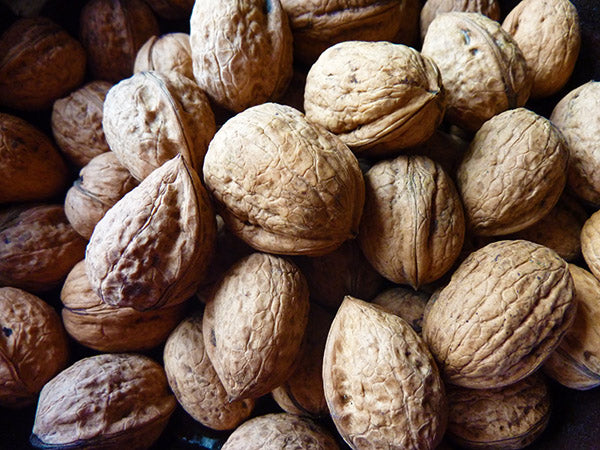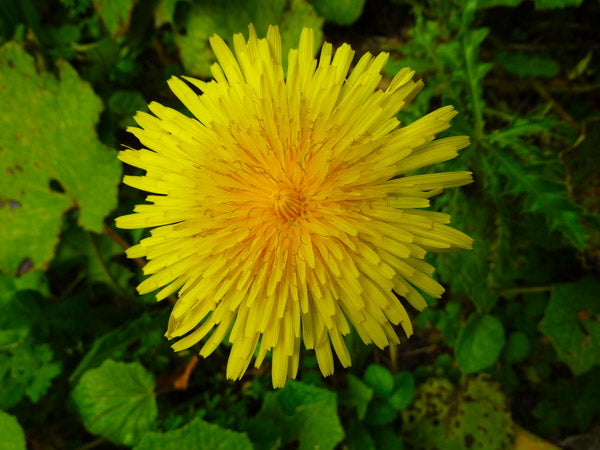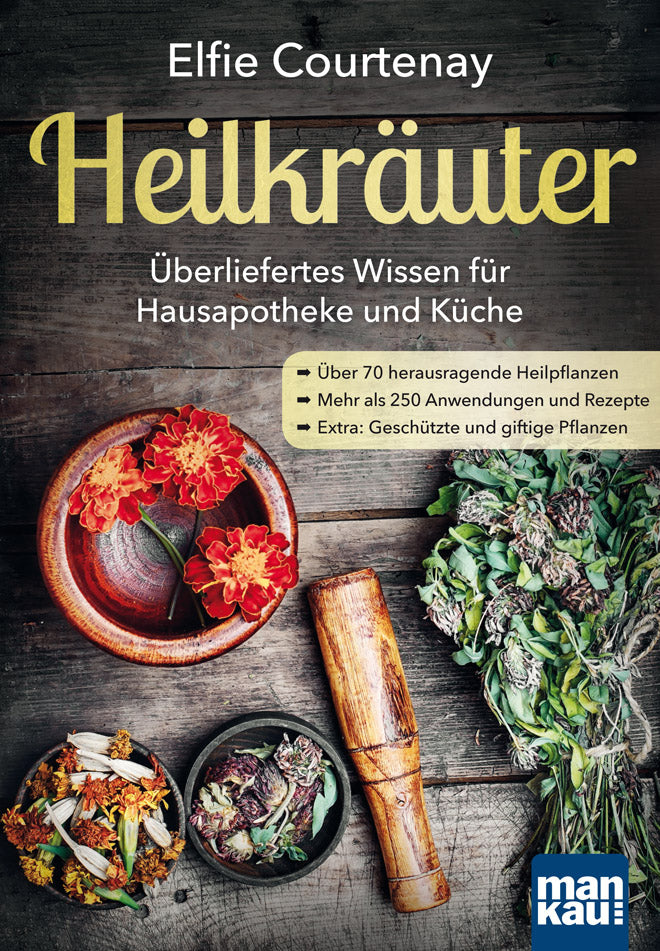
Medicinal herbs for the home medicine cabinet
Medicinal herbs for the home medicine cabinet
Detailed plant portraits from A to Z and practical tips for collecting and using
When people still lived in harmony with nature and the seasons, knowledge of the healing power of herbs was part of everyday life. Elfie Courtenay 's detailed practical book invites you to explore the fascinating realm of wild herbs with all your senses.
Love nature and gratefully accept its gifts
As an experienced wild herb expert, Elfie Courtenay has been accompanying people into nature for over 20 years. She hopes that her love and enthusiasm for the plant kingdom will reach many more people who, like her, have a strong desire to preserve our wonderful creation: "If we humans do not realise that our own survival depends on an intact nature, and do not stop destroying a structure in which everything is connected, everything influences and is dependent on one another, then perhaps one day we will stand in shock in front of barren, poisoned meadows and fields and ask ourselves how it could have come to this."
In her new book about medicinal herbs, Elfie Courtenay uses a wealth of traditional knowledge and experience from folk medicine and herbal customs to convey the great importance of herbal medicine. In addition to around 70 detailed, richly illustrated plant portraits with identifying features, ingredients and effects, the author gives a wide range of extensive recommendations for proven applications from folk medicine. The book contains, among other things, some little-known, effective recipes that are easy to use even for beginners and laypeople.
Find and collect medicinal herbs
The topic of finding and collecting is very important. Because not everything that sprouts fresh from the ground, looks pretty and smells good is automatically edible and healthy! But how do I sharpen my own eyes so that I don't accidentally harvest herbs that are incompatible or even poisonous? How do I recognize natural soil so that I don't collect from heavily fertilized or sprayed soil? And where can I get information or training to reliably identify herbs? If you don't have any previous knowledge, you should first take part in a herb course to gain your own practical experience.
Preserving and storing medicinal herbs
There are many ways to preserve things, and of course it all depends on what the medicinal plants are to be used for later. Careful drying is just as important as careful storage afterwards. Herbs, roots, flowers or seeds can be preserved in alcohol, vinegar or oil, or even in layers of salt or honey. Berries or fruits can also be processed into juice, syrup, liqueur or jelly.
Use and enjoy medicinal herbs
Oils, ointments, tinctures and a variety of teas can be made for your own medicine cabinet. Applications include disinfection, wound cleaning, dressings, rinses, gargles, inhalations, taking herbal drops, sitz baths, partial or full baths, compresses, wraps, rubs and much more. Herbal water, oil or alcohol extracts can also be made, and even special oil mixtures for repelling ticks are a tried and tested remedy.
Wild plants have always played an important role in nutrition for health. Their natural mineral and vitamin content strengthens vitality and the immune system. Acorn flour, for example, can be used to create all kinds of delicious, healthy spreads, and it can even be used to bake bread. And plants also played an important role in everyday life. To name just a few examples: ivy leaves and chestnuts were used for washing clothes, fabrics were woven from nettle or flax fibers, and other plants were excellent for dyeing wool or leather. Elfie Courtenay explains many of these little-known ways of using wild plants.
Customs
If you do some more intensive research, you will also find some interesting traditions about customs. There are museums that have dealt with "farmer doctors" and "herbal women" of earlier times. And in some open-air museums with traditional farm gardens, medicinal herbs that our ancestors used are still grown. Tying "herb bouquets" as well as fumigation and the knowledge of incense and magic plants are also a legacy of our ancestors that has developed over the centuries. It has been passed on to the next generation again and again, usually from mothers to daughters.
Poisonous and protected plants
This area, which is relatively unknown to many people, is also very important if you want to get to know nature better. Although there are only a few deadly poisonous plants in our region, there are some that can cause nausea, stomach pain, vomiting, diarrhea or even liver damage. It is therefore extremely important to be aware of certain risks of confusion and not to harvest and eat in the good faith that everything that grows so luxuriantly is healthy.
But of course it is also about raising awareness and realizing what wonderful plants nature can produce if we just let it. Due to over-fertilization and the use of various pesticides, many plants that were abundant almost everywhere until a few years ago are now almost extinct. Everyone should know about these rare, protected plants, because they must not be taken from nature under any circumstances!
Book tip:
Elfie Courtenay: Medicinal herbs. Traditional knowledge for the medicine cabinet and kitchen. Over 70 outstanding medicinal plants, more than 250 uses and recipes, extra: protected and poisonous plants. Mankau Verlag, 1st edition May 2017, flexi-brochure. 16.8 x 24 cm, 254 pages. 20 euros (D) / 20.60 euros (A), ISBN 978-3-86374-346-8.
Link recommendations:
More information about the guide "Medicinal Herbs"
To the reading sample in PDF format
More about Elfie Courtenay










